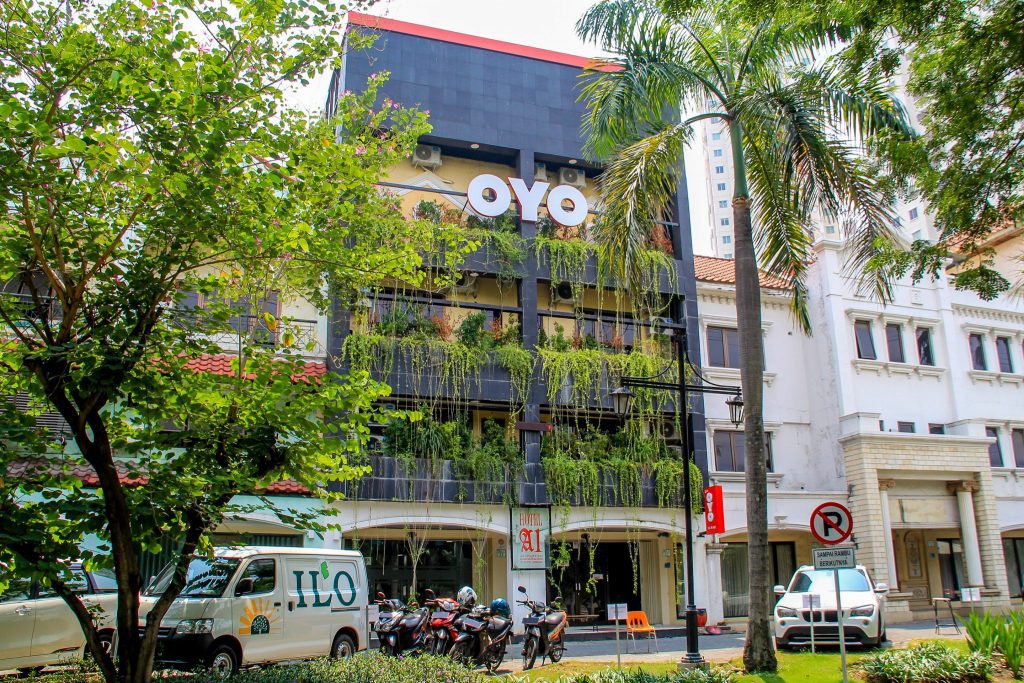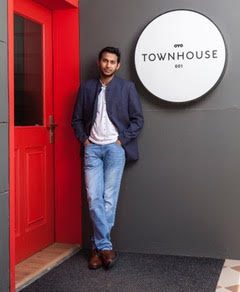Oyo Doubles Investment Plans in Southeast Asia to $200 Million

Skift Take
Oyo Rooms is doubling its investment in Southeast Asia to $200 million, saying that amount is just a start. When it becomes the world’s largest hotel chain in scale, revenue, and margin by 2023, it will have over two million rooms from over 25,000 hotels in Southeast Asia alone, founder & CEO Ritesh Agarwal told Skift in a matter-of-fact way.
No wonder no other name in the hotel industry today possibly raises as many emotions as Oyo does. There’s admiration and envy, but also skepticism and incredulity at the kind of numbers the 25-year-old college dropout is spewing, and whether Oyo’s eventual profitability will be fact — or fiction.
Oyo initially announced an investment of $100 million in Indonesia but in an interview with Skift, Agarwal said it is committing $200 million to the broader Southeast Asia region, adding this “is only the initial commitment…our longterm ambition is to be the biggest hotel chain in Southeast Asia and the world.”
Southeast Asia has been “so fantastic,” he said, pointing to “attractive” initial results since entering Indonesia last October with over 30 hotels and 1,000 rooms in Jakarta, Surabaya and Palembang. This has grown five times in just three months to over 4,100 rooms from more than 150 hotels in 16 cities, he said.
As with elsewhere, about 30 percent of the assets are leased, from partners such as real estate developer Adhi Persada Properti, while 70 percent are franchises.
Agarwal cited STR’s figure of 300,000 to 500,000 unbranded rooms in Indonesia, pointing out that this is only a fraction of Southeast Asia’s estimated 10 million unbranded rooms from 300,000 hotels.
“Of the 10 million unbranded rooms, 4.4 million can actually be found through online websites. So it’s a large market opportunity. I of course have a lot of appreciation for what Ibis and others have done but singlehandedly they are not able to manage the requirements of young Indonesians, Vietnamese, Malaysians who need quality living spaces,” said Agarwal.
He said he would go “deep and wide” in Southeast Asia, and organically rather than through acquisitions. Already, Oyo has 300 development people in the region who “can sign a contract in less than eight days from the first meeting with the asset owner, because we can predict the kind of returns the property can make.”
“We like to acquire companies for competency, not marketshare. If a company brings something so unique that we cannot do ourselves, an M&A then makes a lot of sense,” said Agarwal.
Oyo’s two acquisitions to-date were Chennai-based Novascotia Boutique Homes last March, for its expertise in managing the corporate and service apartment segments, followed last October by AblePlus Solutions, a Mumbai-based technology company that develops Internet of Things systems such as remote monitoring and control of utilities for the hospitality industry.
‘Only Oyo knows how to do it right’
Agarwal believes Oyo will be the biggest in Southeast Asia, and the world, because “no hotel chain understands how to brand, franchise and lease the less than 100-room assets across the world.”
“We are the only company that understands how to do that right,” he said.
“Totally disagree,” said Eric Levy, managing director of Tourism Solutions International. “Wyndham’s Super 8 Motels pops into my head. There must be more than 2,500 of these hotels [in the US, Canada and China] and there are other examples that do a pretty good job of branding/franchising.”
But an experienced hotel development vice president Asia-Pacific agrees that no chain has fully understood the management and franchising of hotels smaller than 100 keys in the budget/economy segment.
“This segment of the market typically thrives in the tier two, three or four cities in the larger countries and is largely domestic. Therefore, the Motel 6s, Jin Jiang Inns, HNA hotels, China Lodging and Ginger hotels of the world have largely been successful in their home countries and never needed to venture overseas,” he said.
These brands would likely struggle overseas as the local players could grow the portfolio and manage/franchise more efficiently, said the source.
“Oyo’s model isn’t exactly new model. It’s just another company originating from another country with some powerful backers. It’s a crowded space with many established players who have cut and sliced the product in so many ways that the incremental level of innovation is limited. There isn’t much stuff to innovate to begin with given their inherent small scale. There are only so many ways you can arrange an 18 square meters room.”
Agreeing, Jesper Palmqvist, area director of Asia-Pacific of STR, said, “I wouldn’t see the fundamentals of what they are doing as completely new; it reminds me of the big economy chains in the US like Super 8, in Europe with Premier Inn, and of course in China in the past 15 years through Home Inn, 7 Days, et cetera.”
He’ll be watching with interest “the tweaks and any small nuances that Oyo look to use to gain momentum and attract both franchisees and customers, as well as driving profitability to their investors.” As well, how Oyo works with seasonality in Southeast Asia, i.e., if it is able to vary inventory based on seasonality, which remains “quite strong” in some big markets in the region.
“Ultimately, competition is usually good for our industry. It can spur performance, growth and innovation, and in many Southeast Asian countries there has for some time been an opportunity for new and fresh accommodation in budget/economy to meet the demand of the rapidly growing Free Independent Travelers across the area with a population of around 650 million,” said Palmqvist.
Same model but better proposition
In the Skift interview, Agarwal too said its model is no different from other chains. “But the proposition is better,” he added.
“Other flags go for assets which could have 80 per cent occupancy by themselves. So they do not add significant value to the asset,” said Agarwal.
Oyo, on the other hand, goes for assets that are doing 25 percent occupancy and ramps that up to 75 per cent through improving the asset quality and service, and offering rates that are 30 per cent lower than competitors in any given market, he said.
He gave examples in Indonesia of Oyo 106 Sarkawi Residence, which saw the occupancy jumping from 28 percent to 94 percent within four weeks of partnering Oyo.
“Adhi Persada will also be developing four more hotels with us,” said Agarwal.
To some hoteliers, however, capital expenditures and lower rates in a segment that is so dirt cheap are a recipe for bottomline disaster. Compounding the view, Oyo hasn’t turned in a profit in its five years of operation.
“It’s totally unrealistic. You need to have return on capital, funds for renovation and upkeep, money for fees to Oyo, profit for the owner of the hotel, pay decent salaries to improve service quality — all from a rate like $11,” said one.
He was referring to a rate on December 29 found on Booking.com for Oyo 285 Taman Rasuna Asri Residence in South Jakarta, 3.2 kilometers from center, for a one night stay in a standard double room on January 1.
But Agarwal said, “Remember, for hotels, the return is based on two multipliers, price and occupancy. Even if you keep the price 10 percent lower, and increase the occupancy three times, the return is still roughly 2.8 times. Not bad!”
Oyo either asks owners to put in capital expenditure to improve the asset, which means lower franchise fees, or it bears those costs itself. In either case, its own general manager will run the hotel to ensure consistent standards, a move mandated for all Oyo hotels since 2016, according to Agarwal.
No other flag is willing to put in capital expenditure, he said. “If you don’t put skin in the game, it’s hard to control the experience.”
Operational and manpower efficiencies through the use of Oyo’s full stack technology are another huge factor in returns, he pointed out.
“None of those flags have very strong technology systems. Oyo has over 1,200 software engineers worldwide, the highest number of any hotel chain, to ensure high levels of technology systems.”
Out goes the traditional hotel management system
Every Oyo hotel uses a next-gen operating system, Oyo OS, with features such as express check-in and check-out, online procurement, inventory management, expense management and staff training and engagement.
There are also sleek apps, for example an Owner’s App, which enables continuous engagement and complete visibility of cashflows, business performance, pricing and customer feedback. Or the Housekeeping App, which updates staff which room they should go next for cleaning.
“Every day, worldwide, we do over 150 million changes to our pricing. Imagine [in traditional hotel keeping] every hotel will have one revenue manager and we would have needed 500 revenue managers for 500 hotels. We have probably just five people running that. But out of those five, two would be data scientists,” said Agarwal.
Oyo also claims that 98 percent of bookings comes through its app and web, with no dependence on online travel agencies. Agarwal is chuffed that In Indonesia, the Oyo app is trending on number one in Google Play.
Tourism Solutions International’s Levy concedes that the current hotel management model is coming under pressure from new players such as Oyo.
“There’s a high probability that the hotel management model of the future will look very different from today’s model. Technology is the enabler. There will be winners and a good probability from outside today’s leading hotel companies as they aren’t bound by industry paradigms.
“The possibility of leading hotel companies facing a similar fate to Enron, Compaq, Worldworths, Standard Oils and the like is real indeed,” said Levy.
The billion dollar question, when will it be profitable?
With $1 billion from powerful backers including Softbank, Oyo is of course able to put skin in the game.
Within only three months in South-east Asia, for instance, it has employed 1,000 direct staff, excluding the 8,000 Oyo hotel staff employed by franchisees. Its Indonesia and Malaysia operations are headed experienced country managers, Rishabh Gupta and Ming Luk, respectively.
It has also opened two skills institutes in Jakarta and Kuala Lumpur to train staff working at Oyo hotels.
In Malaysia, Oyo now has over 5,000 rooms from more than 120 hotels, according to Agarwal.
Oyo is evidently going for growth, not profit. Its strategy is to scale quickly, build brand awareness, gain loyal customers and be market leader, then reap the “outcome” from that position.
STR's Palmqvist said given the capital Softbank continues to see, for example from the Saudi Arabia fund, one would expect Softbank to continue to invest regardless of the brand currently being unprofitable, and get the valuation up before looking at next steps for that investment.
Based on unaudited figures from Oyo CFO Abhishek Gupta, who wrote in the official Oyo blog, Skift has triangulated a net income loss of around $50 million in 2017.
The blog claims a doubling of the top line and a narrowing of losses by a third in 2017.
“We’re happy with the figures that got updated [in 2017]. Franchise fees alone grew roughly seven times. There was also a very strong efficiency improvement, with 33 percent improvement on the bottomline,” said Agarwal.
He won't discuss 2018 figures ahead of the annual report in the first quarter, except to say growth “continued to be very attractive” and Oyo became a more global company, with broader businesses and numbers from across markets India, China, South-east Asia, Middle East and Europe.
“It [growth] will continue to be very strong. We see our margins in India continuing to be good, upwards of 15 percent.
“But that said, we think of our profit as more like an outcome rather than a plan. We focus on continuing to get better market share, focus on competencies and enabling good franchise fees.
“Profit is a long-term outcome,” said Agarwal.





